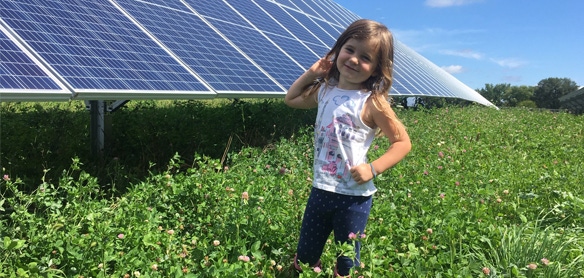November 25, 2019

By M. Charles Gould
Several months ago, I was in Florida attending a renewable energy conference. While there, I toured a 500-acre solar project that used sheep to manage plant growth under the solar arrays.
It was immediately obvious that the sheep were not being managed correctly. Instead of using a rotational grazing method to manage forages, the sheep had access to one 250-acre paddock. They chose the best grass to eat, leaving undesirable grass to grow tall and become rank.
The appearance of tall grass next to the shorter grass that had been eaten was not visually appealing. Further compounding the problem, there were too few sheep for the acres of forage available for them to graze. There was no way the sheep were going to keep the grass under control.
As I reflect on that situation, it appears that the solar developers designed the project without sufficient consideration for the lifetime cost of vegetation management. I have talked with enough solar developers to know that there is a significant operation and maintenance cost reduction when sheep or low-growing pollinator-friendly meadows are used in solar projects instead of sod.
In webinars, the National Renewable Energy Laboratory regularly highlights cost savings as a driver for adoption of pollinator-friendly solar. The ideal scenario would be for the solar developer and the sheep producer to sit down early in the planning stages of the project and determine what forages should be planted and what grazing method should be used. The American Solar Grazing Association strongly recommends rotational grazing.
In Michigan, solar projects that go on land enrolled in the Farmland Preservation Program should be designed and planted to achieve a score of at least 76 on the Michigan Pollinator Habitat Planning Scorecard for Solar Sites. Thinking through how to maximize the utility of a pollinator planting before the solar project is installed gives purpose to the planting and ensures the correct flowers and forbs are planted.
For example, there is an outstanding program offered through Michigan State University Extension for veterans who want to become apiarists. The Heroes to Hives program provides all the training people need to manage an apiary.
The problem is there are not enough sites in Michigan for the number of Heroes to Hives graduates. A meaningful contribution to solve this problem would be for pollinator plantings to be intentionally designed during the planning process to support commercial beekeeping operations.
Best practices for solar farm apiaries can be found on the Fresh Energy website. Consultants, contractors, seed sources and other pollinator-planting support specific to Michigan can be found on the Michigan Pollinator Initiative website.
The annual Tracking the Sun report released in the fall by the Lawrence Berkeley National Laboratory points out that the solar industry's growth and evolution isn't only the increasing number of systems, but also their design and scale. With the potential for 6,000 megawatts of solar projects (which will cover about 24,000 to 36,000 acres) installed in Michigan over the next 10 years, opportunities for solar and ag to work together will be plentiful.
Sheep and honey production are just two of many examples of agrivoltaics, a movement that is gaining momentum across the U.S. as more solar projects are installed. Given the challenge to decarbonize the electricity grid, choosing between agriculture and energy is a false dichotomy.
Agrivoltaic projects that combine the two can turn any pending competition between energy and food into mutually beneficial cooperation. It just takes planning and communication for that to happen effectively.
Gould is an MSU Extension educator who provides expertise in the areas of renewable energy and energy conservation to Michigan farmers and agribusiness. He has expertise in solar investment analysis, bioenergy crop production, small anaerobic digesters and implementing on-farm energy conservation measures. He can be reached at [email protected].
You May Also Like




